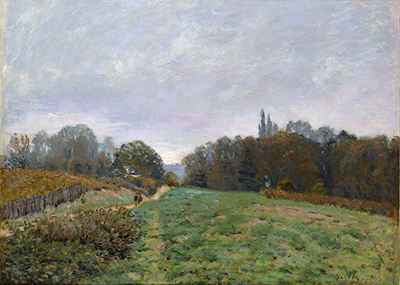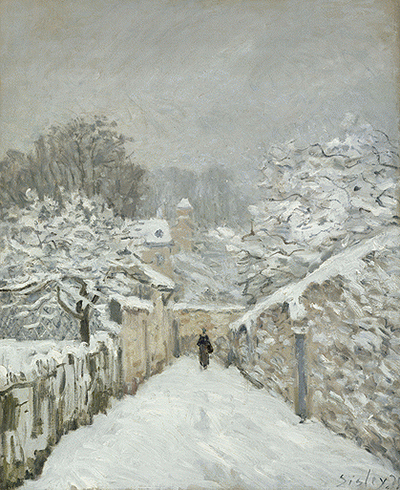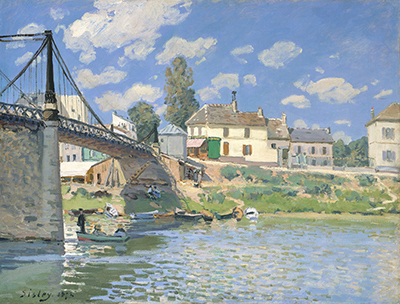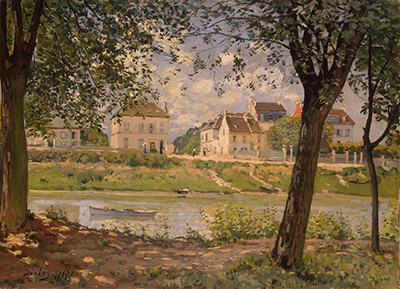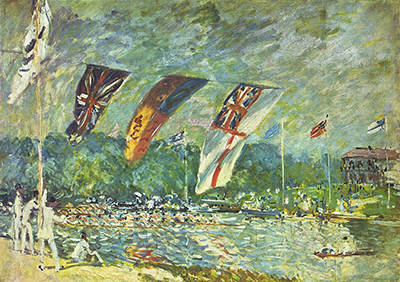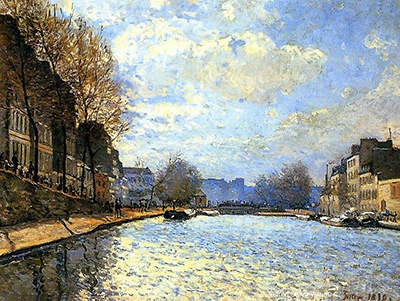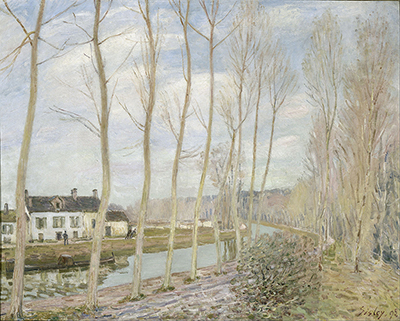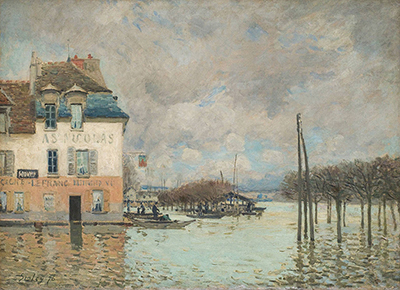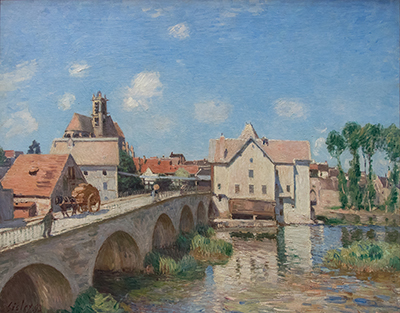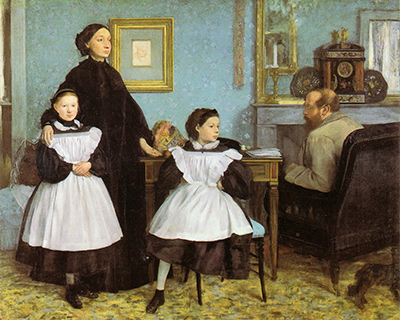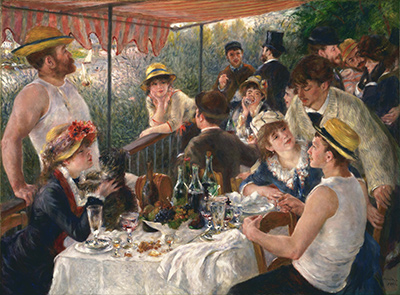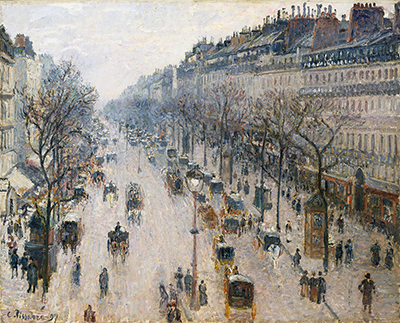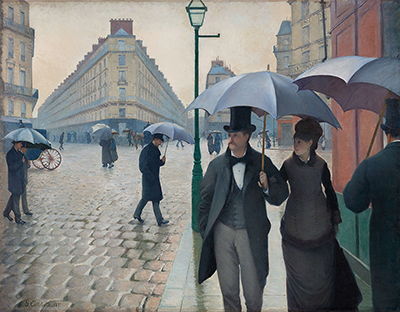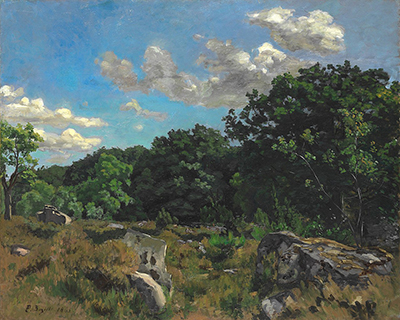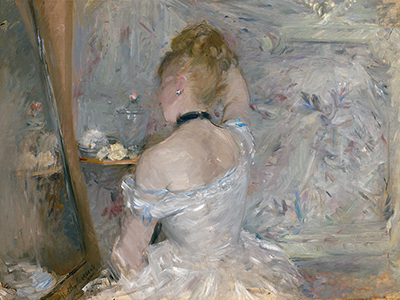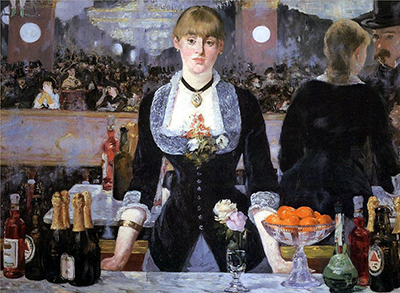The art was created back in 1873 in Louveciennes, Alfred had spent most of his time admiring the surrounding landscape and scenery, and their appearance motivated him to paint them.
He used oil on canvas as he developed this painting. The painting incorporates grass, some vegetation, trees, and the sky. They depict scenery that a viewer can see from a raised point. The colors used are similar to those in the real environment as the grass, and the trees assume the green color. Also, the path assumes the brown color, which is identical to that of soil.
A small path cuts across the field that is painted green to depict the existence of grass. It does not use bright colors to attract the attention of third parties, but it creates an atmosphere of relaxation. This is attributed to the manifestation of the calming effect that is brought about by the natural environment. The piece of art further incorporates hilly places within the piece of art. Two individuals are seen walking along the path as they head to the farthest point of the track. This attracts the viewers' attention to what motivates them to take that path and direction as opposed to the opposite side.
Just like his other pieces of art, he embraces the style of impressionism in this particular work. Given the setting of the landscape, it depicts peacefulness and tranquillity that is associated with nature. There are no houses on the view, and as such, this portrays quietness as opposed to the noisy human environment. The work is located in the National Museum of Western Art in Tokyo, Japan.
His impressionist and natural style were influenced by JMW Turner, who traveled widely, and through his journeys, he got the inspiration to embark on his painting. For instance, whenever he went to Venice, he developed pictures of the region. For example, he painted the Grand Canal, Venice, back in 1835. Besides, he embraced the natural environment and the catastrophes that came along in the human environment. For instance, he embraced painting rain, storm, the sea, and fires. Just like his influencer’s paintings, Alfred had the first-hand experience with the sources of his paintings. This was the basis in which he came up with the landscape in Louveciennes as he had visited the village. The features of the area are depicted, and as such, he expressed his love for nature and the atmospheric space.
More Impressionist Artists



